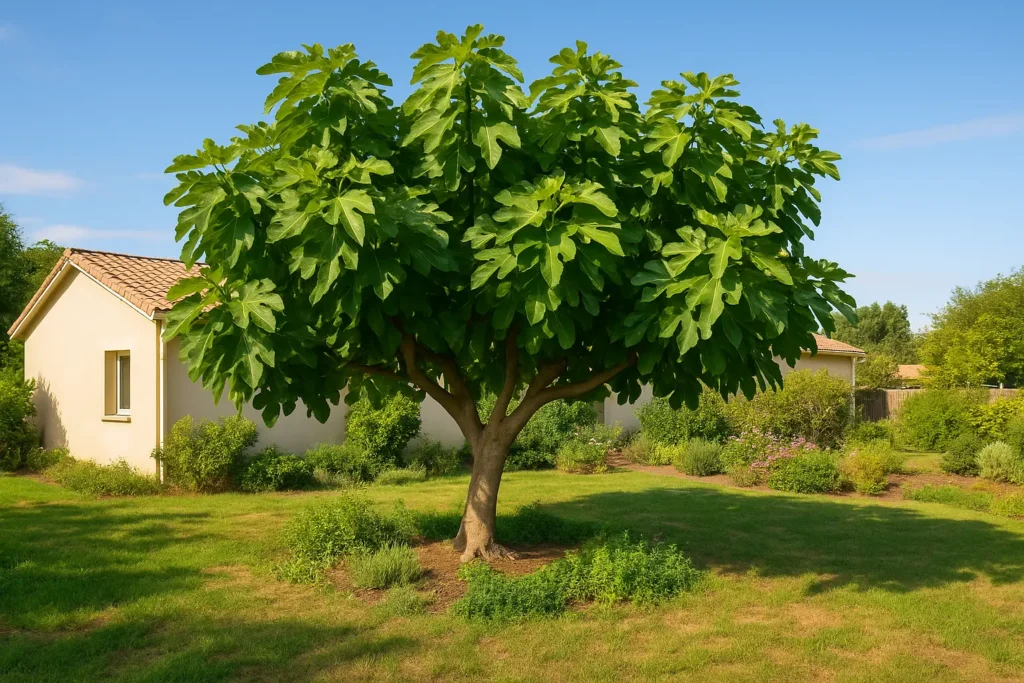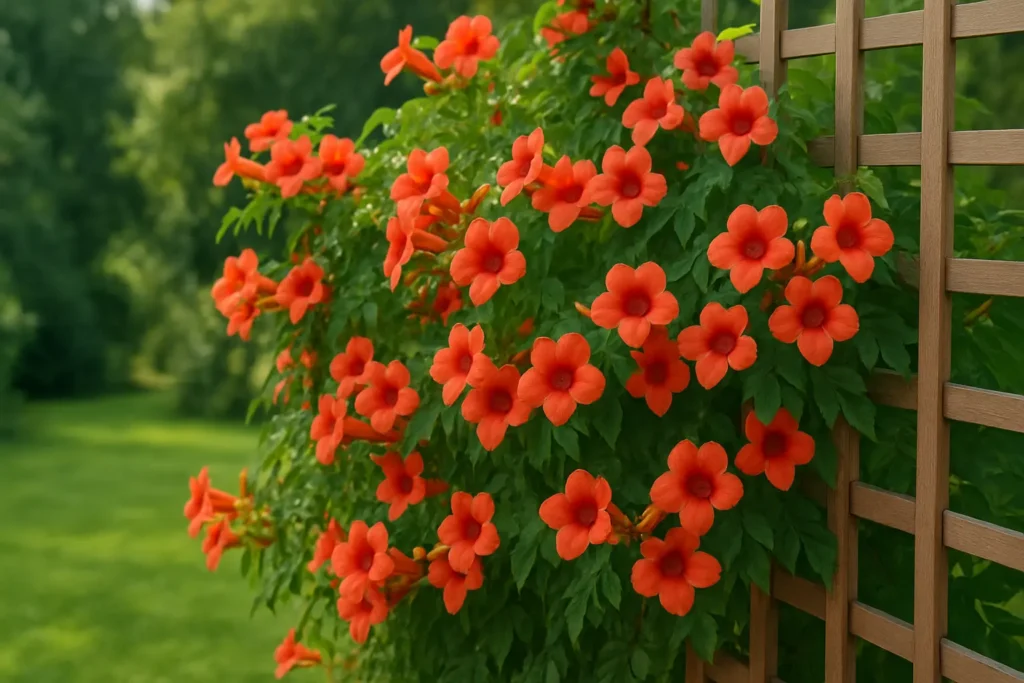The Japanese maple, this little plant jewel with delicate and colorful leaves, brings an incomparable touch of elegance to our gardens. With its graceful silhouettes and foliage that transforms with the seasons, theAcer palmatum has become the ultimate ornamental tree for creating soothing and inspiring outdoor spaces. But to preserve all its splendor, this Japanese maple requires special attention, particularly regarding its pruning. Let's take a look at the techniques to use to prune a Japanese maple and maintain this precious tree so that it can fully display its natural beauty in your garden. garden, while respecting its rhythm and delicate nature.
Our article in brief:
Pruning a Japanese maple requires precision and delicacy to preserve all its beauty and health in our gardensHere are the key points
- Ideal time to prune a Japanese maple : end of winter or beginning of spring (February-March), before the sap rises, with possible slight intervention in June.
- Use perfectly disinfected tools and adapted (pruning shears, shears, saw) for clean cuts.
- Practice the Japanese technique of “ metsumi » by pinching new shoots to control growth.
- Avoid the intensive pruning and never remove more than 20% from the volume at one time.
- Supplement with regular watering and slightly acidic soil for harmonious development.
Summary
When to prune a Japanese maple to preserve its natural beauty?
So that your Japanese maple retains its elegant silhouette, choose your pruning time wisely. The ideal time is late winter or early spring, usually between February and March. Prune before the sap rises and new leaves appear to minimize stress on the tree.
A second light intervention can be carried out in June to reduce the length of overly vigorous branches and maintain a harmonious shape. This summer pruning helps control growth while preserving the natural silhouette that I admire so much in my gardens. Asian-inspired.
Absolutely avoid pruning in the fall. This common mistake stimulates new growth that will become vulnerable to winter frosts. For lower branches that may be trailing along the ground, wait until November, when the tree goes dormant.
Remember that theJapanese maple does not tolerate intensive and repeated pruning well. Favor gentle but regular interventions to maintain this perfect balance between wild nature and controlled elegance which makes all the charm of gardens inspired by Asia.
The best techniques and tools for pruning a Japanese maple tree
To succeed in the size of your Acer palmatum, equip yourself with suitable and well-maintained tools. Use clean, sharp pruning shears for small branches, wood shears for intermediate branches, and a branch saw for larger cuts.
Disinfecting tools before each intervention is essential to prevent the transmission of diseases. A simple wipe with 90% alcohol or white vinegar is enough for this essential precaution.
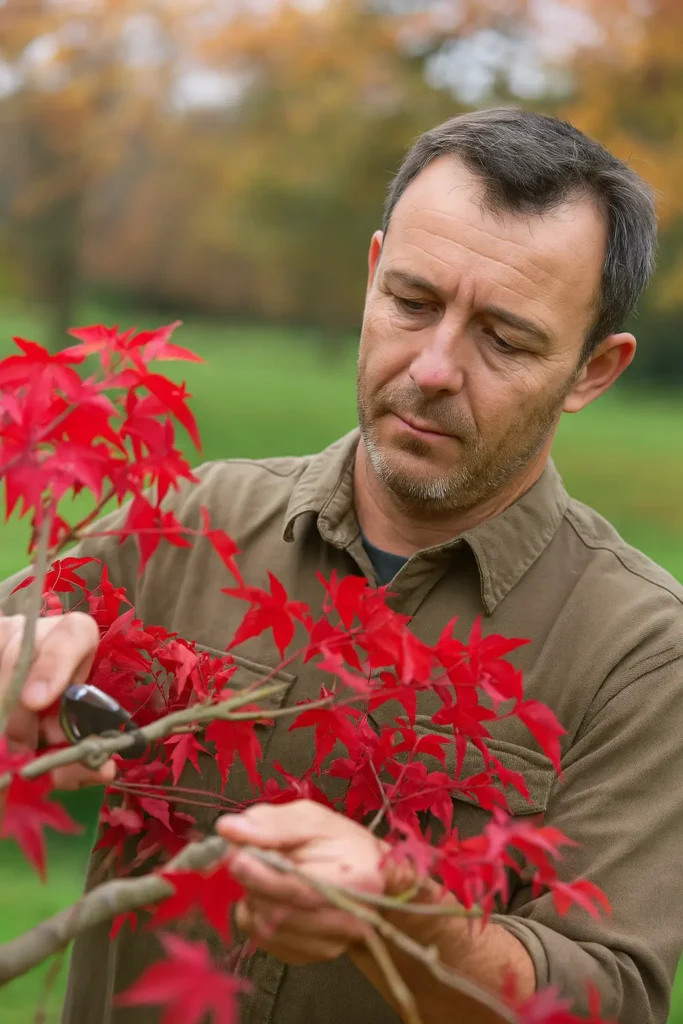
Master the Japanese technique of "metsumi," which involves gently pinching tender new shoots at their tips. This ancient practice helps control the direction and density of growth while respecting the tree's soul.
Always make clean, slightly angled cuts above an outward-facing bud. This method encourages growth in the desired direction and helps create an airy, balanced silhouette. For larger cuts, apply a natural healing sealant to aid healing and reduce the risk of infection.
Different pruning approaches to enhance your Japanese maple
Essential maintenance pruning for your Japanese maple
There regular maintenance pruning of Japanese maple forms the foundation of a healthy and aesthetically pleasing tree. Start by removing all dead wood and diseased branches that unnecessarily strain the tree. Then remove branches that grow inward, creating an unsightly tangle that restricts air circulation.
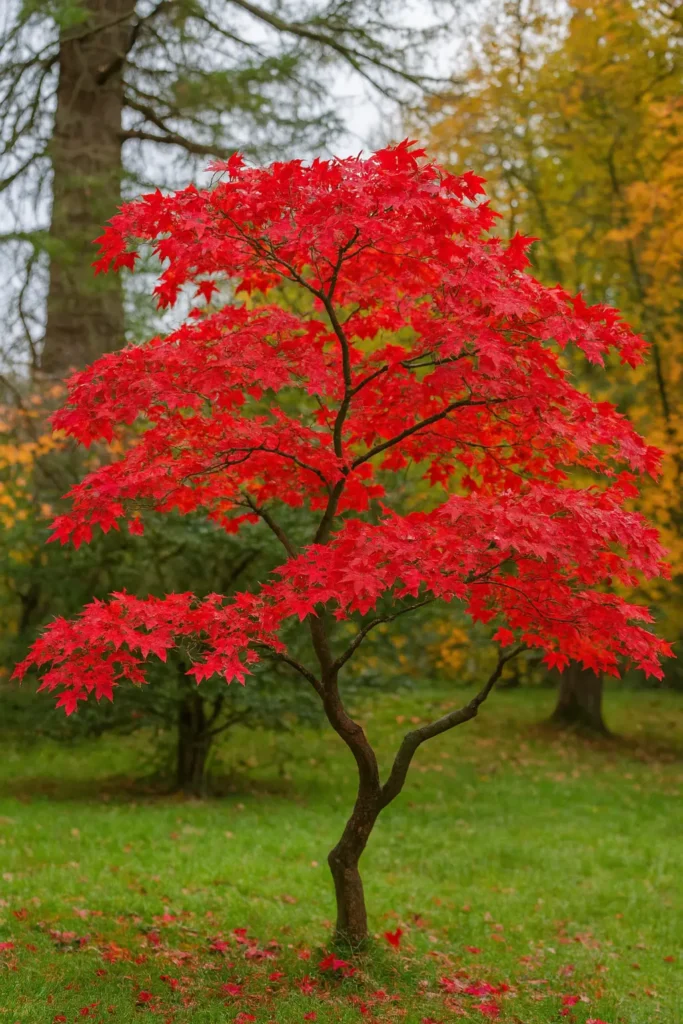
Identify and trim branches that cross or rub against each other, as these create wounds that can lead to infection. For outward-facing branches, shorten them by about one-third to encourage denser branching and a balanced growth habit.
Specific sizes to create characteristic shapes
To obtain a coppiced maple, so appreciated in gardens naturally inspired, cut the young tree about 30 cm above the root collar. This technique encourages the appearance of new branches that will form several harmonious trunks.
| Desired shape | Pruning technique | Ideal period |
|---|---|---|
| Ovoid shape | Remove low branches, reduce high branches | End of winter |
| Bonsai | Severe pruning + root pruning | Late autumn |
| Niwaki (clouds) | Form horizontal plateaus with clouds of foliage | Structure in winter, details in spring |
Niwaki pruning, the wonderful Japanese technique that creates cloud-like shapes, requires patience and precision. Carefully select the horizontal, well-spaced main branches, then remove the small intervening branches, leaving only masses of foliage at the tips.
Common Mistakes to Avoid When Pruning Your Japanese Maple
The biggest mistake is to make a excessive pruning which considerably weakens the Japanese mapleUnlike some trees that tolerate drastic cuts, the Acer palmatum reacts badly to this brutal treatment which can compromise its health and beauty.
Absolutely avoid pruning during the flowering period or during periods of drought, when the tree is mobilizing all its resources. Intervening during these sensitive periods will significantly weaken your precious maple tree.
Another common mistake is to cut excessively in the center of the tree, creating a funnel effect that unbalances the natural silhouette. Also, resist the temptation to remove all the main branches in one session, which would be too abrupt a shock.
- Never cut more than 20% of the total volume of the tree in one go
- Avoid close cuts which delay healing
- Do not use undisinfected tools between two trees
- Avoid pruning during periods of frost or heatwave
- Never neglect the application of putty on large wounds.
Essential Complementary Care for a Thriving Japanese Maple
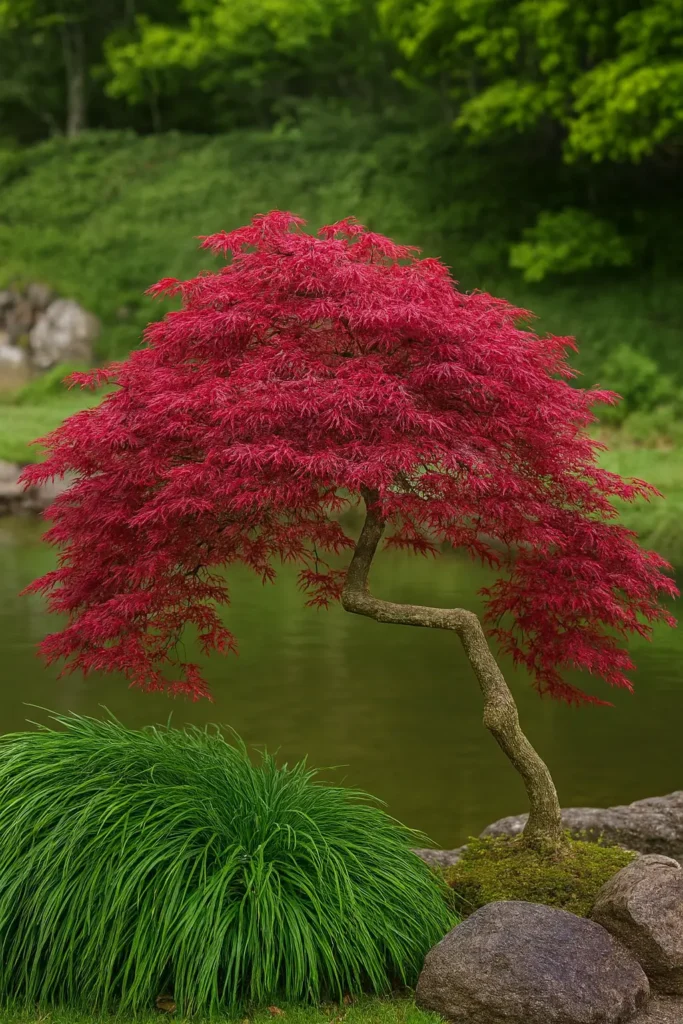
Balanced Watering for Your Japanese Maple
L'Acer palmatum appreciates consistently moist but never soggy soil. Plan for regular watering, especially during periods of active growth and during dry spells. However, be careful not to over-wet the foliage, which would encourage the appearance of fungal diseases.
In summer, a light misting of the foliage in the evening brings a beneficial freshness, recalling the atmosphere of the Japanese undergrowth from which these maples originate.
Soil and fertilization adapted to the needs of the Japanese maple
Plant your maple tree in a partially shaded location, protected from drying winds. The ideal soil is well-drained and slightly acidic (pH between 5.5 and 6.5), enriched with a balanced mix of garden soil and quality potting soil.
Apply organic fertilizer each spring to support growth without causing excessive growth that would upset the tree's natural shape.
Protection against Japanese maple diseases
Maintain a clean environment around your maple tree by regularly collecting dead leaves and plant debris. Keep a close eye on the appearance of mealybugs, which you can treat naturally with a solution of black soap diluted in water.
If you suspect leaf wilting, do not hesitate to quickly remove the affected parts to prevent the spread of diseases such as verticillium wilt or root rot.
Adapting maintenance to different varieties of Japanese maples
Each variety ofJapanese maple has its own characteristics which influence its maintenance. Dwarf cultivars like 'Shaina' Or 'Beni Komanchi' require less pruning than vigorous varieties such as 'Bloodgood' or 'Osakazuki'.
Purple-leaf maples like 'Atropurpureum' are more susceptible to sunscald and prefer a shadier location than their green-leafed cousins. Adjust your care accordingly to preserve the intensity of their color.
Variegated varieties like 'Butterfly' or 'Ukigumo' require special care regarding reversion to type. Promptly remove any branches that reveal entirely green foliage to maintain the desired variegation.
Whichever variety you choose, carefully observe your Japanese maple to adjust your care to its specific behavior. This intuitive and respectful approach will allow you to create that perfect harmony where the gardener's hand is forgotten, leaving you believing that nature alone has shaped this delicate beauty.
